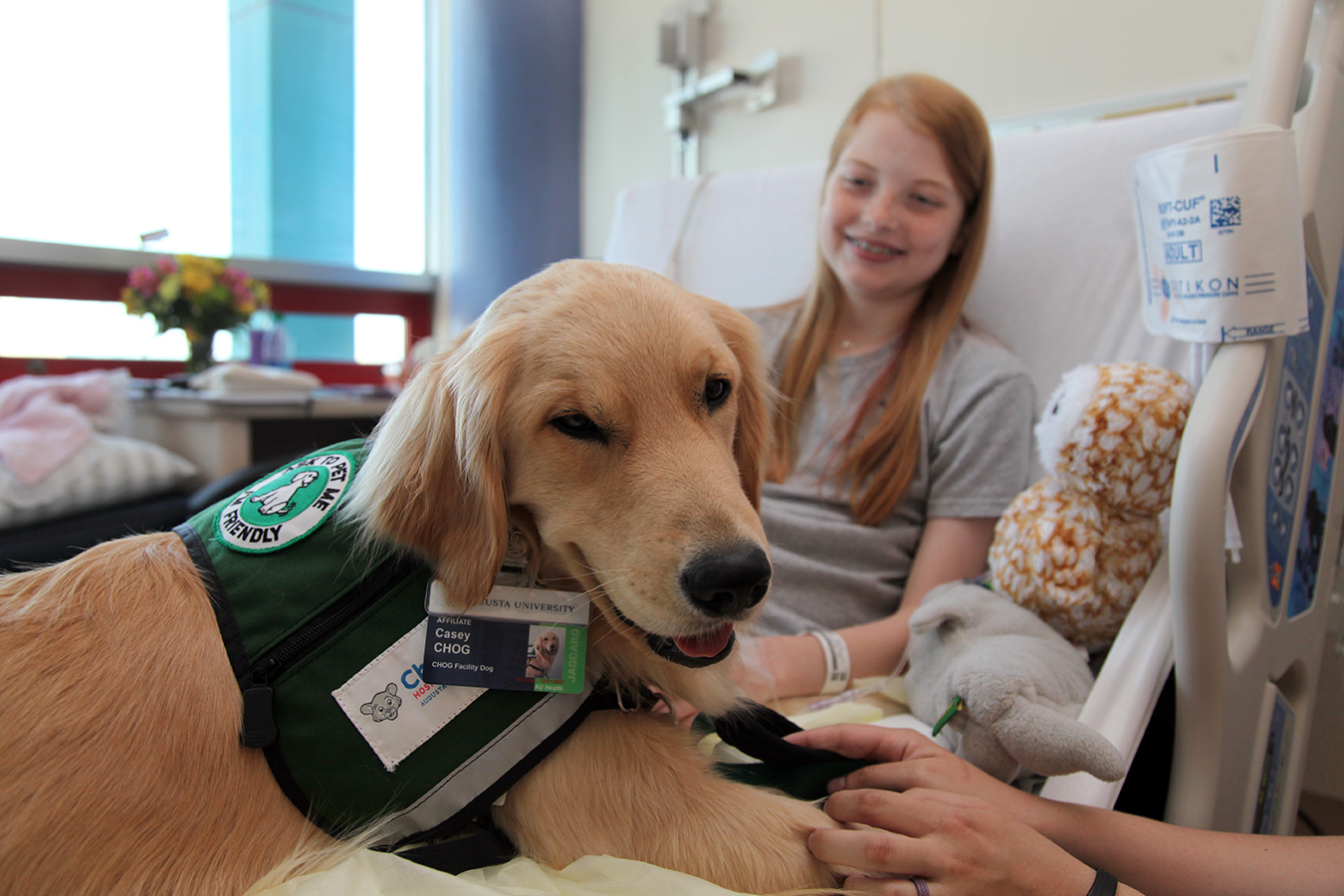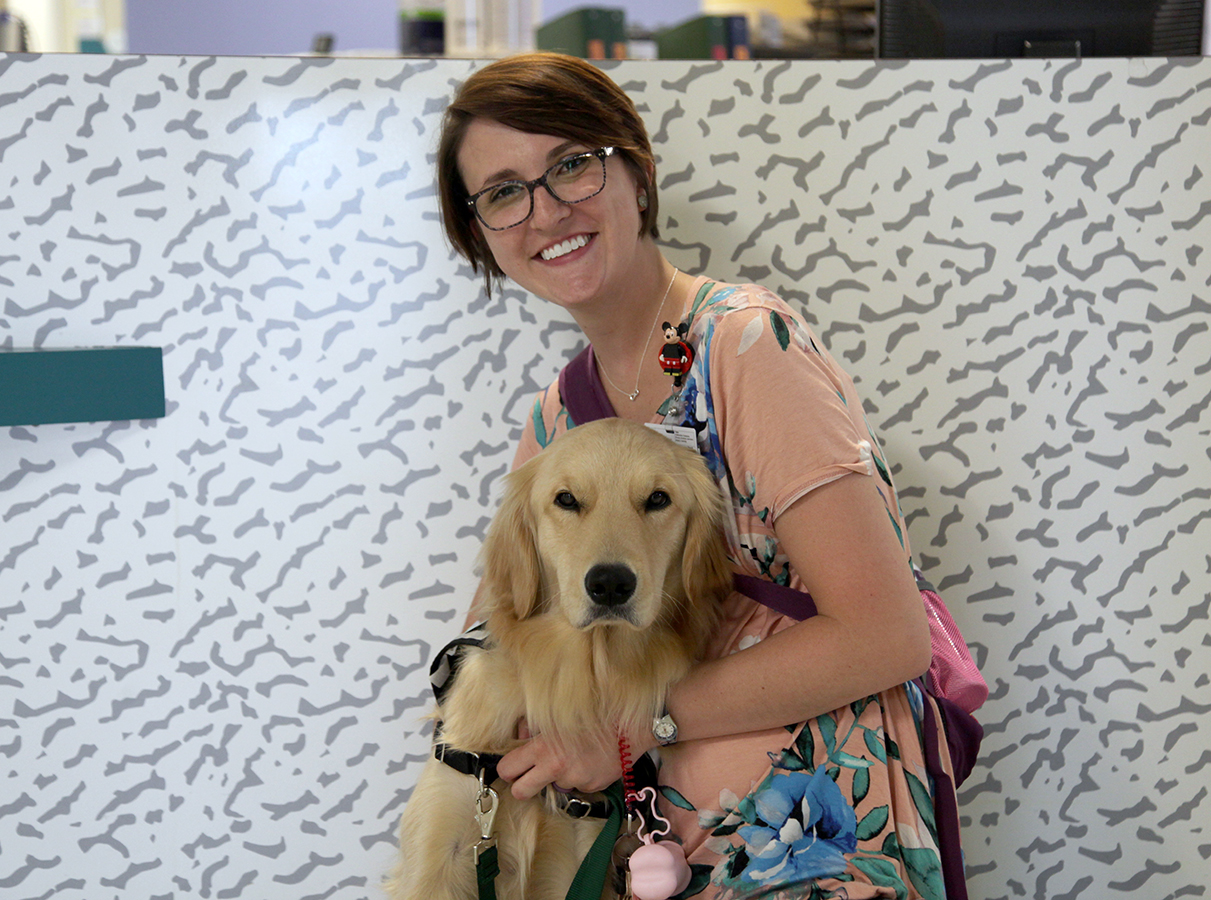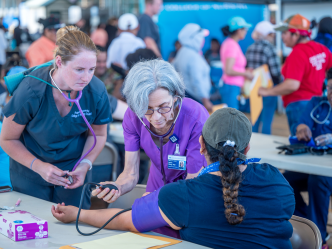A trip to the hospital can be stressful for patients of any age. For pediatric patients, however, it can be especially traumatic.
Knowing this, the Children’s Hospital of Georgia introduced a cuddly companion in 2017 to put kids’ minds at ease and reduce their anxiety.
Nugget, a 3-year-old golden retriever, has been trotting down the halls of the hospital ever since, greeting children and bringing smiles wherever she goes.
Nugget was recently joined by Casey, another golden retriever who turns 2 in July. Together, the two have doubled the number of patients who get a visit from an adorable pup every day.
“I hate that a kid has to be anxious and is fearful of what’s happening, but just seeing the ‘light switch’ (it’s what I call it) turn on when Nugget comes into the room is worth it,” said Nugget’s handler, Harleigh Smith. “I say I’m just here to do the fun stuff — and surprise, I have a furry friend too! Seeing that fearful face just completely relax, and that jawbone relax, and a smile come across their face; seeing all the smiles on a daily basis is super rewarding.”
Smith said that every young patient is different in how they approach meeting Nugget.
“Some kids like her to get up on the exam table with them so they can pet her with one hand, or hug her to help them hold still,” she said. “We sometimes put the hair net on Nugget just like them. They can pet her for comfort while their eyes are with me working on an I Spy book.”
Casey joined the hospital’s facility dog program in March and is already acclimating well to her new duties. Her handler, Macie Meeks, will often be in the waiting area as children are being prepared for surgery.
“Casey can wear an anesthesia mask to model that behavior for kids,” Meeks said. “She can be there for older kids to pet as we talk about their surgery, as an anxiety relief.”

Smith recalls a recent example where Nugget served as an anxiety relief for a child.
“We were helping place not just an IV, but also an NG tube — a tube going up the nose and down the throat to get to their tummy,” she said. “The patient was super anxious, not really wanting to do anything other than just be left alone. When we introduced the dog, and she got comfortable with the dog, and then got comfortable with me and the intern, it allowed us to have a productive preparation conversation. Otherwise, any attempt that we had to discuss anything medical, she would have completely tuned us out. After building that trusting relationship with Nugget, we were able to get an IV and NG tube placed without having to sedate them, so that was a win.”
Of course, Nugget and Casey can’t be everywhere at once, but the goal is to make it so that they don’t have to be.
“When we’re with them, we can teach them coping strategies so if Nugget and I are somewhere else, they’ll think ‘well, we need to remember when Miss Harleigh and Nugget were here, I took some really deep breaths and that helped me hold still really well,’” said Smith. “We’re equipping them with the coping strategy so that they can continue to do well whether or not we get to be there.”

Both Nugget and Casey were born and raised at the Canine Assistants farm in Alpharetta, Georgia. Though the organization has been around since 1991, originally with the goal of placing service dogs with individuals with disabilities, the expansion into placing dogs in children’s hospitals is relatively new. They placed their first facility dog at Children’s Healthcare of Atlanta 10 years ago.
Facility dogs spend their entire lives with Canine Assistants prior to being placed somewhere, because it’s crucial that every experience they have with a human is a positive one.
“Relationships are the most important thing,” said Karen Casto with Canine Assistants. “They should know that they are loved and safe with people all the time, and to have no fear.”
Puppies are exposed a lot to the people working at Canine Assistants and are eventually taken to grocery stores, restaurants, sporting events and other places to get used to how people live.
At about 10 months, there’s an assessment of the different dogs’ personalities to see which ones are most suited to the more social life of being placed in a hospital, while others may be better suited to living with a single owner.
The hospital dogs are then taken to local Atlanta hospitals to get exposure to that environment.
When a hospital requests a dog, as Children’s Hospital of Georgia did, there is a process to find the right match.
“When everything is approved, we go to the hospital, do a visit, get to know the handlers and the patient population they’ll be working in,” said Casto. “We find out the expectations and match them with the right personality of dog.”
Nugget and Casey have truly found a great home at CHOG, while their handlers find the experience very rewarding.
“You get to leave the hospital knowing that you’ve helped make a really intimidating, not so normal place less intimidating and traumatizing for a patient,” said Smith. “Every day we have the privilege of having a job that we know made a difference.”

 Augusta University
Augusta University



